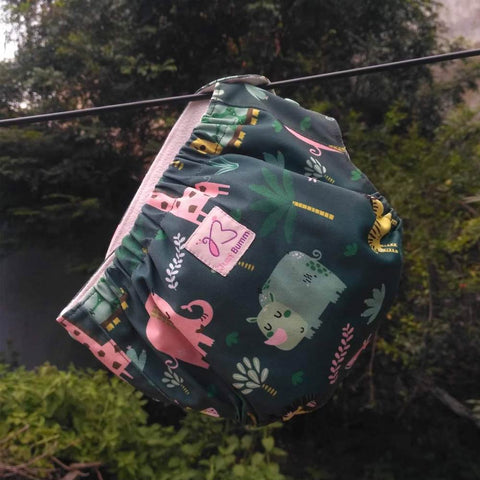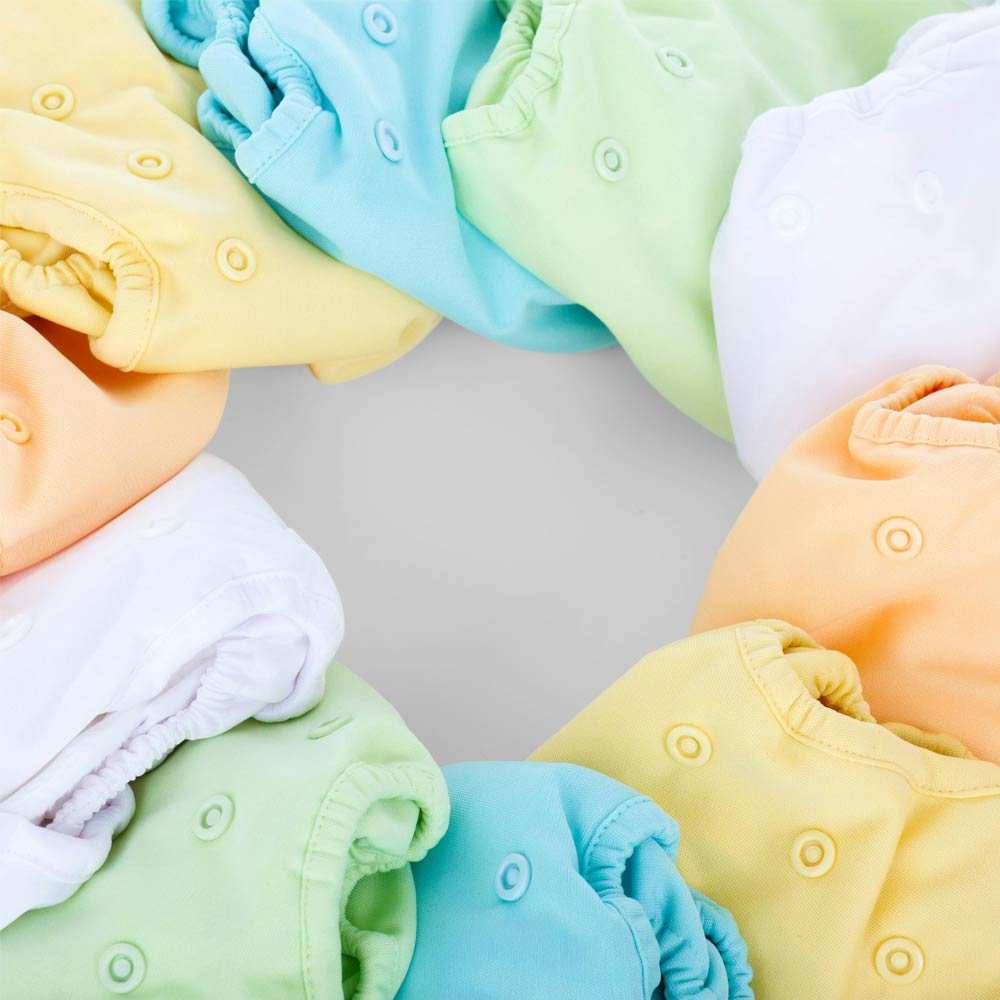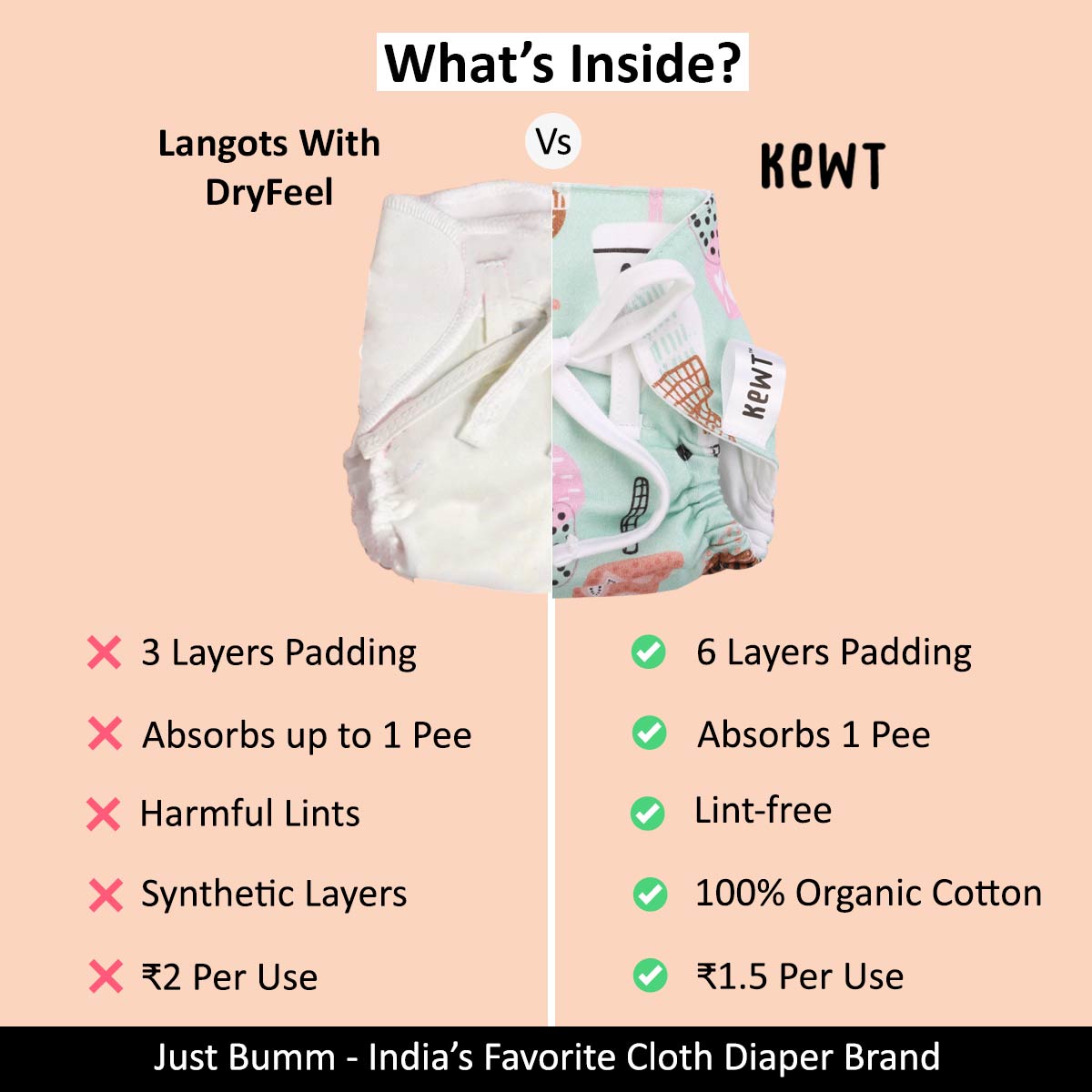
Cloth diapering is an eco-friendly and economical alternative to disposable diapers. It can be a rewarding experience for parents who are passionate about sustainability and gentle on their baby's skin. However, navigating the world of cloth diapers & langots can be overwhelming, especially for first-time parents. This blog is your one-stop guide to cloth diapering success, packed with essential do's and don'ts to make your cloth diapering journey smooth sailing.
- Benefits of Cloth Diapers & Langots
- Types of Cloth Diapers
- Do's of Cloth Diapering
- Don'ts of Cloth Diapering
- Troubleshooting Common Cloth Diapering Issues
Benefits of Cloth Diapers:
Before diving into the do's and don'ts, let's explore the reasons why cloth diapering might be the perfect choice for you.
Environmentally Friendly: Disposable diapers contribute significantly to landfill waste. Cloth diapers & langots, on the other hand, are reusable and have a smaller environmental footprint.
Cost-Effective: While there's an initial investment in cloth diapers & langots, you'll save money in the long run compared to buying disposable diapers for several years.
Gentler on Baby's Skin: Just Bumm Cloth diapers & langots are typically made from natural fibers like organic cotton & hemp, which are breathable and less likely to cause diaper rash compared to disposable diapers with phthalates, toxins & plastics.
Leak Protection: Modern cloth diapers offer excellent leak protection with absorbent materials and leak-proof covers. Whereas, langots provide an alternative to cloth diapers for babies with sensitive skin.
Types of Cloth Diapers
There's a wide variety of cloth diapers available, each with its own advantages and learning curve. Here's a quick overview of the most common types.
Prefolds & Flats: These are the most traditional cloth diapers. They are rectangular pieces of absorbent fabric that require folding and wrapping around the baby. Prefolds can be used with a cover or secured with a diaper pin. But in India, Prefolds come with buttons to attach and use inside a diaper cover.
Pocket Diapers: These consist of a waterproof outer shell with a pocket where you insert absorbent inserts. They offer convenience and come in various prints and designs. The most preferred and affordable option in India.
All-in-One (AIO) Diapers: AIOs are all-in-one packages with built-in absorbency. They function similarly to disposable diapers but are reusable. It takes a really long time to dry. So having only AIOs in your stash is not economical. You may need atleast 30 to begin with.
Fitted Diapers: These are one-piece diapers with built-in absorbency. They offer a snug fit but may require additional leak protection for heavy wetters. Same as AIOs.
Hybrid Diapers: These combine features of different types. For example, a hybrid diaper might have a disposable insert within a reusable cover. It’s better off to not have such a diaper as it does not make any difference.
What is the difference between langots and cloth diapers?
- Langots, traditionally used in India, are string-type nappies that you can wrap around babies. It now comes with padding to absorb one pee completely. It is used during diaper-free time & daytime. It is very helpful in keeping a baby’s pee count, especially for pre-term babies. Langots are made of 100% Organic Cotton and do not include any waterproof or dry feel features for the same reason.
- Cloth Diapers on the other hand has features like waterproof layer, dry feel layer and are super absorbent, that you can use it as an alternative to disposable diapers. Most moms use cloth diapers for daytime naps, nighttime and for travel.
Tip: Having a mix of Cloth diapers and langots in your stash can make cloth diapering and laundry very efficient and affordable.
Do's of Cloth Diapering
Prepping for Cloth Diapering
Do your research: Familiarize yourself with the different types of cloth diapers and choose ones that suit your lifestyle and budget.
Invest in a good stash: Start with 20-30 diapers & langots to establish a washing routine. You can always add more later or manage with what you have.
Pre-wash your diapers: Cloth diapers & langots require pre-washing to remove any manufacturing residues and maximize absorbency. Refer to the specific care instructions for your chosen brand.
Choose a cloth-safe diaper cream: Petroleum-based diaper creams can repel moisture and harm the absorbency of cloth diapers. Look for zinc oxide-based creams.
Set up a diaper pail: A well-ventilated pail like an open bucket or basket is ideal for storing soiled diapers until wash day.
Using Cloth Diapers
Change frequently: Change your baby's cloth diaper every 2-3 hours, just like you would with a disposable diaper. Langots should be changed after each pee.
Solid waste disposal: Wash off or dump soilds in a designated toilet, rinse & squeeze the rest before adding them to the pail. This helps minimize mess and potential odor. As for soiled diapers without poop, store them as such without rinsing.
Fit matters: Ensure a snug but comfortable fit around the legs and waist to prevent leaks.
Nighttime diapering: You might need to use a nighttime solution with extra absorbency for longer stretches between changes. Cotton and Hemp provide superior absorbency for nighttime.
Washing Cloth Diapers
Develop a wash routine: Wash your diapers every 2-3 days. Follow the recommended water temperature for your specific diapers. Do not exceed 40 degrees. Cotton 30 or 40 is recommended for Just Bumm Cloth diapers or in general. As this mode is ideal for water and energy consumption!
Skip the extras: Don't use fabric softeners or other additives, as they can coat the diapers and affect their absorbency.
Extra rinse: Consider an extra rinse cycle to ensure all detergent residue is removed.
Drying: Line drying under the Sun is the most economical and eco-friendly option.
Water Softener: If you have hard water, add water softener in each cycle including rinse.
- Read: Cloth Diapers and Hard Water.
Don'ts of Cloth Diapering
Don't get discouraged by leaks: Leaks are common, especially during the learning curve. Experiment with different diaper types, fit, and absorbency to find what works best for your baby.
Don't use bleach or harsh chemicals: These can damage the fabric and compromise the effectiveness of your cloth diapers.
Don't force it: Cloth diapering isn't for everyone. If you find it overwhelming or stressful, switch briefly to a hybrid routine. Or consider using only langots.
Don't compare yourself to others: Every baby and family is different. Find a cloth diapering routine that works for you and your lifestyle.
Don’t suffer: Machine washing cloth diapers and langots is more efficient than hand washing. Consider investing in machines. HE machines save water, and energy while using less detergent! You may not have house help, so don’t take it all on yourself!
Troubleshooting Common Cloth Diapering Issues
Leaks: Common causes include improper fit, not enough absorbency, or detergent build-up.
Diaper rash: Ensure frequent changes, proper cleaning, and use cloth-safe diaper creams.
Stiff diapers: Hard water minerals can cause stiffness. Add water softener if you have hard water.
Ammonia smell: This indicates Ammonia build-up. Get in touch with us. Bleaching or stripping is not safe for you, the baby, the diapers, and the environment.
Conclusion
Cloth diapering can be a rewarding and sustainable way to care for your baby. By following these do's and don'ts, you can navigate the cloth diapering journey with confidence. Remember, there's no perfect way to cloth diapers. Embrace the learning process, find what works best for you and your baby, and enjoy the benefits of a happy and healthy baby!



Leave a comment
All comments are moderated before being published.
This site is protected by reCAPTCHA and the Google Privacy Policy and Terms of Service apply.